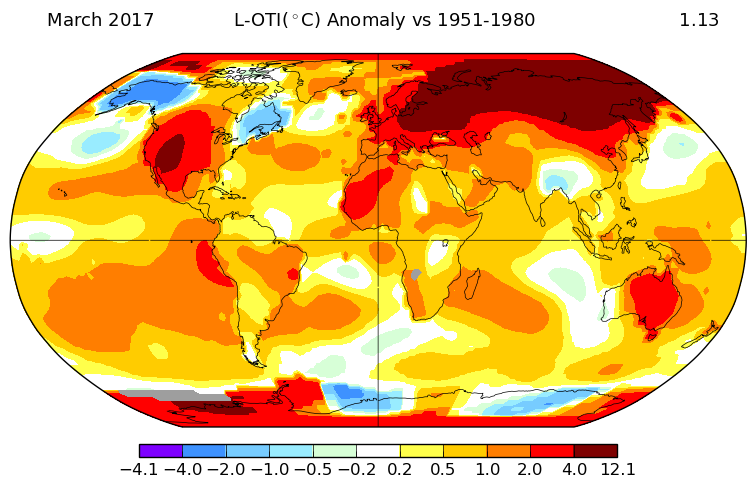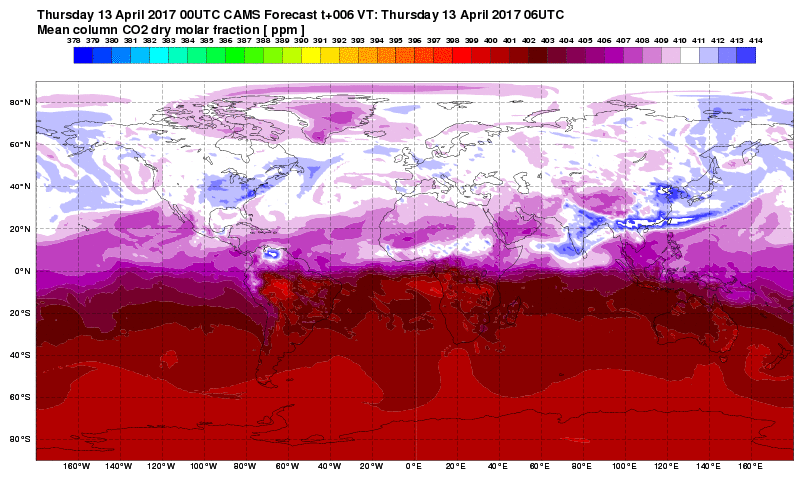April 2017 2nd-Hottest April On Record, Even w/o El Nino
According to today’s report from NASA’s global temperature monitor, March of 2017 was the second hottest such month recorded in the 137 year climate record.
Temperatures for the month were 1.12 C hotter than NASA’s 20th Century baseline and 1.34 C hotter than 1880s averages. These warm temperatures likely represent a climate state not seen on Earth since at least the Eemian climate epoch of 115,000 years ago. They are also now in a range that is producing serious geophysical changes such as glacial melt, sea level rise, sea ice melt, more extreme weather, and declining ocean health.
 ?w=600&h=387
?w=600&h=387
(Temperature anomaly distributions during March of 2017 is indicative of continued, global warming related polar amplification. Image source: NASA.)
Much of the excess heat during March, as has been the case with many recent months, has focused at the poles. The northern polar region in particular saw considerable above average temperatures with extreme +4-12 C anomalies focusing over Siberia and the Russian side of the Arctic Ocean. 2-4 C above average conditions, meanwhile, blanketed much of Antarctica.
A key benchmark — sea surface temperatures in the central Equatorial Pacific — remained near average. Typically, warmer than normal temperatures in this region associated with El Nino tend to help push the world to new high temperature marks as the warm side of natural variability combines with the considerable effects of 405 ppm CO2 levels (along with other greenhouse gasses).
 ?w=1200&h=714
?w=1200&h=714
(The highest global CO2 levels in 4-15 million years is the primary driver of the present global warming event. During April through May, seasonal atmospheric CO2 levels peak. But since the mid 19th Century global CO2 levels have risen from 280 parts per million to the present average of 405 parts per million — primarily due to fossil fuel burning. Image source: The Copernicus Observatory.)
But despite near average ocean temperatures in this zone and a lack of El Nino conditions, March of 2017 was just 0.16 C cooler than the record warm March of 2016 and fully 0.2 C warmer than the, now third warmest, March of 2010.
EDIT
https://robertscribbler.com/2017/04/14/no-el-nino-but-march-of-2017-was-the-second-hottest-ever-recorded/#comments
 ?w=600&h=387
?w=600&h=387
 ?w=1200&h=714
?w=1200&h=714